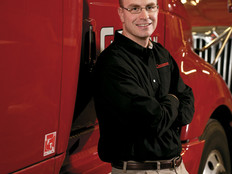4 Tactics to Make Sure Your Disaster Recovery Plans Are Up to Date
After experiencing a crisis such as a natural disaster, 1 in 4 small businesses never reopens its doors. Another 40 percent close shop within two years.
Sobering stats such as these are commonly touted by the Federal Emergency Management Administration, Labor Department and Small Business Administration. How can your business avoid a tragic end?
In the wake of the extensive hurricanes, wildfires and floods that have swept the country over the past year, SMBs should revisit or develop a business continuity plan to ensure that they are adequately prepared, should disaster strike.
SIGN UP: Get more news from the BizTech newsletter in your inbox every two weeks!
1. Update Business Impact Analyses and Risk Assessments
BIAs and RAs identify the consequences and potential losses that could result from a disruption. To be valuable, these assessments require periodic review, during which business assets can be reprioritized, if necessary, and protective measures and continuity strategies can be revised.
Consider not only natural disaster scenarios, but also human hazards such as workplace accidents and robberies, as well as technological risks such as power failures and supply chain delays. Learn how to conduct or improve BIAs and RAs at ready.gov.
2. Keep Business Continuity Plans Simple and Widely Available
Create separate plans to address each type of disruption, and keep them simple and straightforward so they can be carried out speedily by a shoestring team. Be sure to update them as important business changes occur.
Keep digital copies of all plans in multiple electronic locations, including users’ smartphones, and make sure the IT team can globally update the information as needed.
3. Layer in Resiliency to Disaster Recovery
Disaster Recovery as a Service will allow for quick recovery of applications and data should a crisis occur. In the event of a disruption on-premises, avoid downtime by shifting users to cloud-hosted services.
Ultimately, a hurricane won’t discriminate between a cloud provider’s data center and a business’s on-premises or backup facility. To mitigate the risks of any given natural disaster, maintain multiple backups in disparate geographic locations. Also, account for possible connectivity disruptions by creating multiple paths to data.
4. Test Your Recovery Plan Regularly
A well-crafted recovery plan can help a business efficiently resume operations after a disruption occurs — but even the best-laid plan needs to be vetted to make sure it works.
Test recovery plans at least twice a year to ensure that employees know what to do, particularly if leadership is unreachable. Document manual processes to be used if a corresponding technological process is compromised.









